The Legends of Lithuania's Curonian Spit
Amy McPherson travels to Lithuania and learns the story of Neringa and the Hill of Witches.
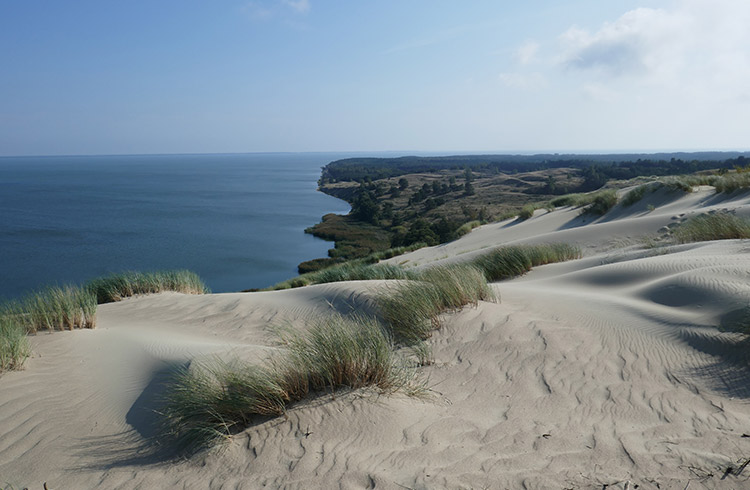 Photo © Amy McPherson
Photo © Amy McPherson
I am roaming the forests of Witches Hill to uncover the story of Neringa and other folklore creatures of Lithuania. It’s a place where many of these tales are told through sculptures of dragons, witches and monsters, including the Devil, whose presence I am particularly drawn to. Seeing that I am among creatures of the dark, I might as well befriend the highest power of them all.
The story of Neringa
The Witches Hill is in the settlement of Juodkrante on Neringa, the Lithuanian part of the Curonian Spit, a UNESCO World Heritage Site of unique sandbank landscape that stretches 60mi (98km) across the Baltic Sea from the coast of Lithuania to Russia’s outpost of Kaliningrad.
The spit was formed 5,000 years ago by the movement of the sea, sand and wind, three elements that still play an important part to the livelihood and natural conservation of the area.
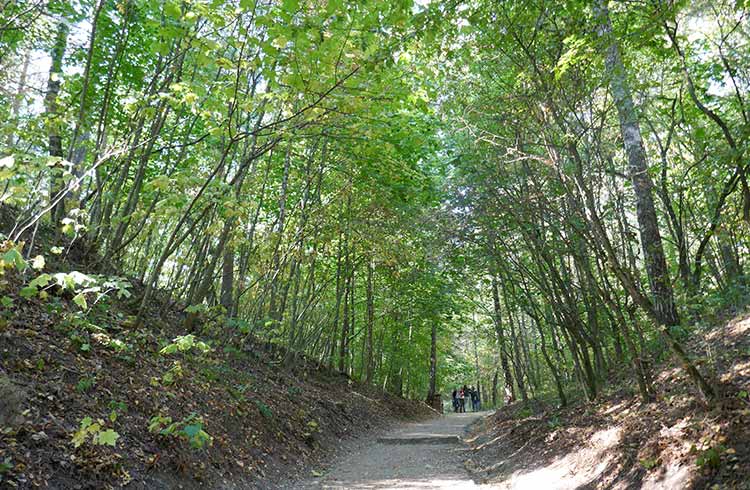
Legend has it that Neringa was a friendly and good-hearted giantess who called the coast of Lithuania home. Her beauty attracted the attention of an evil dragon Naglis, who wanted to marry her. Neringa refused the proposal which sent Naglis into a rage, stirring up storms from the sea to destroy the coastline. To protect her home and those who live among it, she tipped a strip of sand across the sea to ease the effects of the storm, forming what we know as the Curonian Spit today.
In honor of their heroin, the Lithuanian part of the Curonian Spit is named Neringa, after the giantess who saved them.
And on Witches Hill, the legend of Neringa and other Lithuanian folklore are told through 100 wooden sculptures dotted around a tranquil forest, including my new good friend, Lucifer.
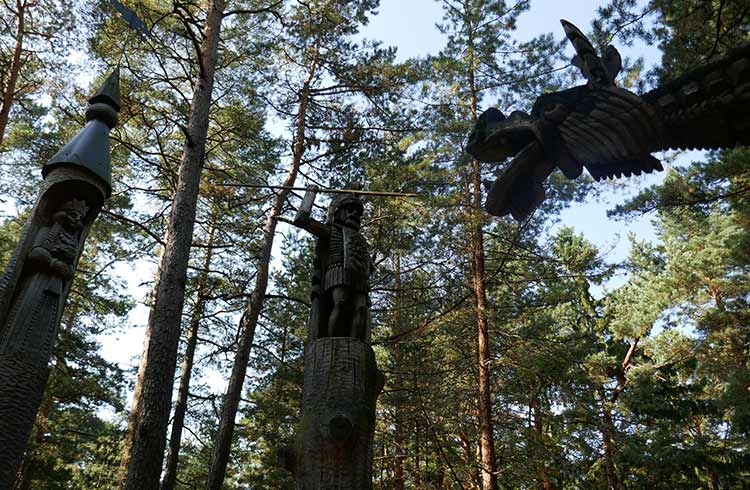
The Dead Dunes
Leaving the witches in peace, I visit one of the most famous sights on Neringa – the Dead Dunes.
Stretching for almost 62mi (100km) along the sea coast of the Curonian Spit is Nagliu Nature Reserve, a vast area of Grey Dunes, also called Dead Dunes, where sand had covered former settlements and centuries-old wood soils. Supposedly, this is the last stretch of Neringa’s ribbon of sand that is still protecting the villages and settlements on the Spit, and the main coastal region of Lithuania, by stopping sand blown from the sea to enter further towards the Curonian Lagoon and onwards to the mainland.
I meet a guide from the national park, and we explore the dunes at Pardinis near Nida. I park my bike at the car park, and we walk along the wooden boardwalk towards the roaring sea where I come face to face with the Grey and White Dunes, still being shifted and shaped by the forces of nature every day.
Despite the desert-like environment, the eco-system is surprisingly alive. Other than the different sand grasses, the dunes support a variety of vegetation such as daphne willow, rugosa rose (also known as beach rose) and the seemingly delicate (but tough) Baltic searocket with its purple flowers. Darting among them are the little tawny pipits and woodlarks.
I follow the path to the end, where the dunes drop dramatically into the ocean and an observation tower had been erected. This is where you can see Russia, advised my guide who points in the direction of a small headland in the distance. This is Kalinigrad, the Russian state which shares the protection of the Curonian Spit with Lithuania. When it comes to nature, perhaps there’s room for teamwork after all.

Wildlife in the Curonian Spit
I’m exploring the Curonian Spit by bike, which is the perfect way to experience this unique natural and cultural destination. Spinning at a pace of my own, I’m able to notice more things than if I was exploring by car.
One thing that amazes me, is the amount of wild birds on both sides of the Spit. At a beach along the sea coast, thousands of migratory birds swoop past my line of sight, en masse, following their natural instincts influenced by the season and the wind.
On the lagoon end, a curious gathering of herons and cormorants have formed a colony that is not entirely natural to their behavior, yet, about half a mile away from Juodkrante lives the largest and one of the oldest colonies of these birds in Lithuania. Around 2,500 nests of cormorants and more than 500 nests of herons are believed to live here, and what a sight. Enough to slow me down so much that I almost fall off my bike!
Fishing heritage
Being a coastal region, the locals of Neringa have always relied on the sea and the lagoon for survival, and fishing has a long history in the livelihood of those who live here.
Along the coastal path around Nida, poles topped with weather vanes that used to crown the mast of a traditional fishing boat (kurenas) create a curious and pleasant sight while exploring the town, and at the Ethnographic Fisherman’s Museum, which is an old wooden fisherman’s cottage, I learn how these fishermen lived and worked, what the symbols on the weather vanes mean, and how the trade changed throughout history.
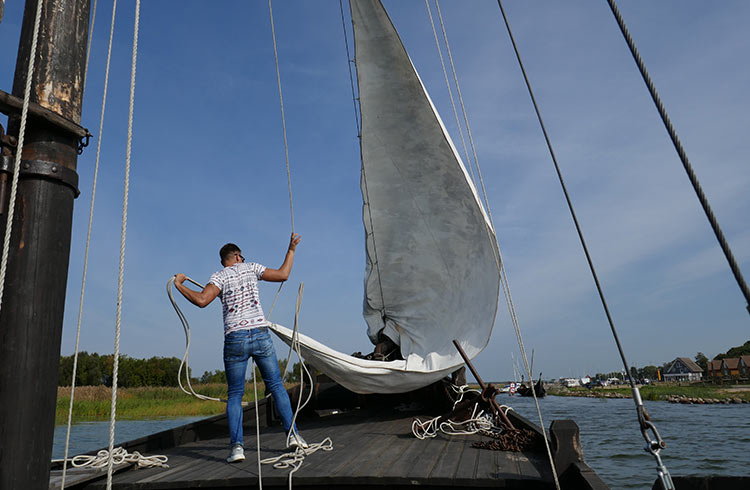
Lithuanian cakes
Following the well-paved coastal path, which stretches roughly 31mi (50km) along the coast on the Curonian Spit, I pedal a leisurely 1.2mi (2km) back to the center of Nida, and visit a local bakery for a post-exercise snack. Mesmerized by the range of cakes available, I seek advice from the lady behind the counter, and I’m handed pieces of carrot candy and slices of the local wholegrain bread.
I order a cup of coffee and enjoy the treats under the watchful eyes of the owner. I ponder on her question: “How do you like Neringa?”
The giantess or the land? I counter.
She laughs.
“We’ll make you a local yet.”
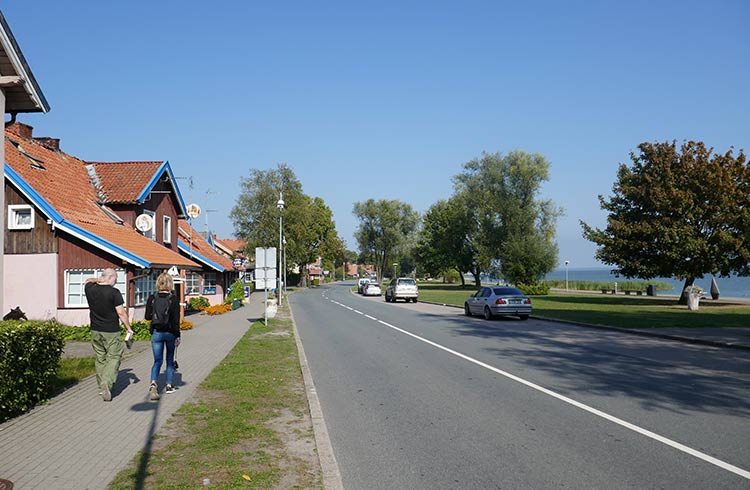
Trip notes
Getting around
Neringa (the Curonian Spit) can be accessed by ferry from the city of Klaipeda. Foot ferry crossing cost US $1.15 (€1) and bikes can travel on the ferry for free.
The most rewarding way to explore Neringa is by bicycle, and bike hire can be arranged in Klaipeda or on the Spit itself in the town of Nida.
When to go
The most pleasant months to visit are between June and August. If you’re planning a long cycle adventure, May and September with temperatures averaging around 62ºF (17ºC) are be better suited for the physical activity and to avoid crowds.
Protecting the environment
As the Curonian Spit is a protected UNESCO Heritage Site, it’s important that you observe the etiquettes of nature to help preserve this unique natural landscape. Take your rubbish with you, if you cannot find a bin; when walking, cycling or driving, stay on designated paths and public areas to avoid trampling the delicate eco-system; and do not feed the wildlife.
Related articles
Simple and flexible travel insurance
You can buy at home or while traveling, and claim online from anywhere in the world. With 150+ adventure activities covered and 24/7 emergency assistance.
Get a quote
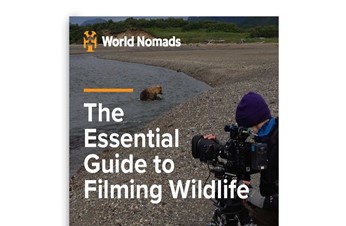
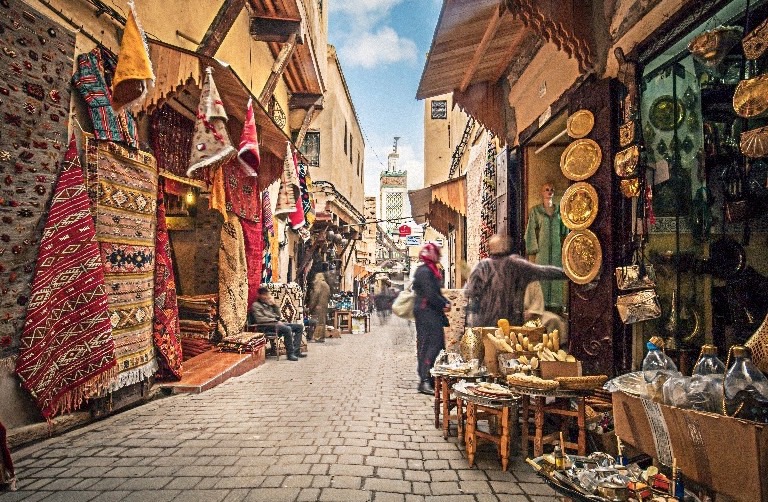
No Comments